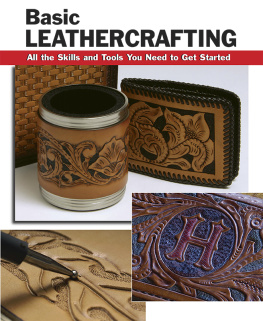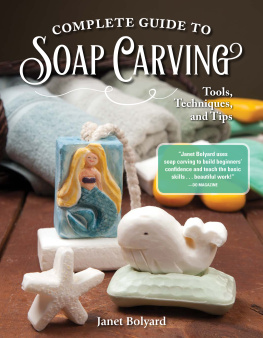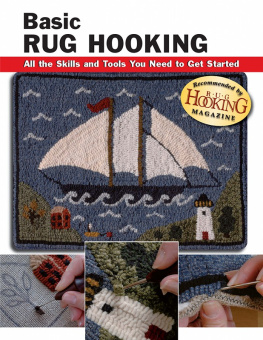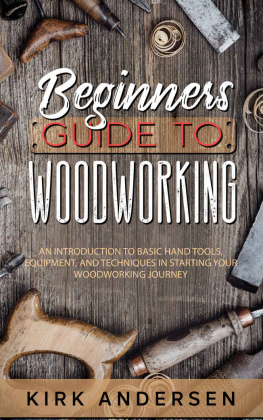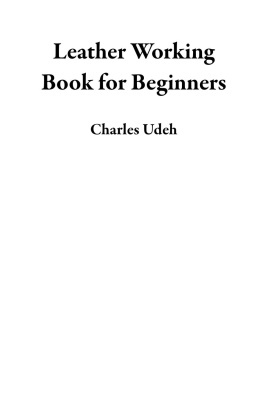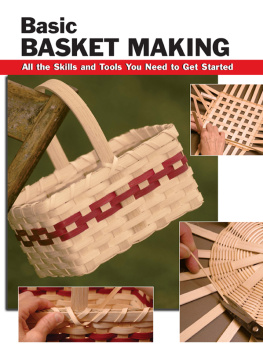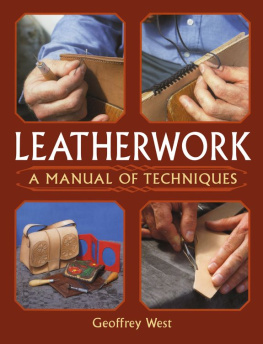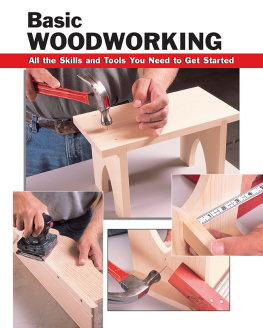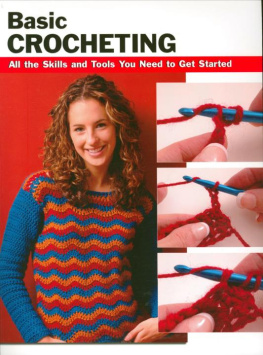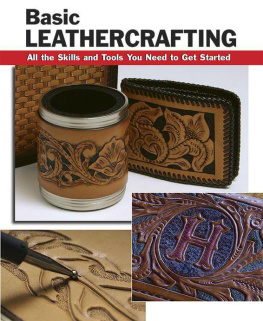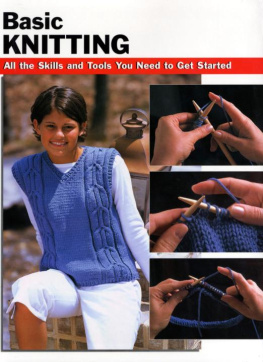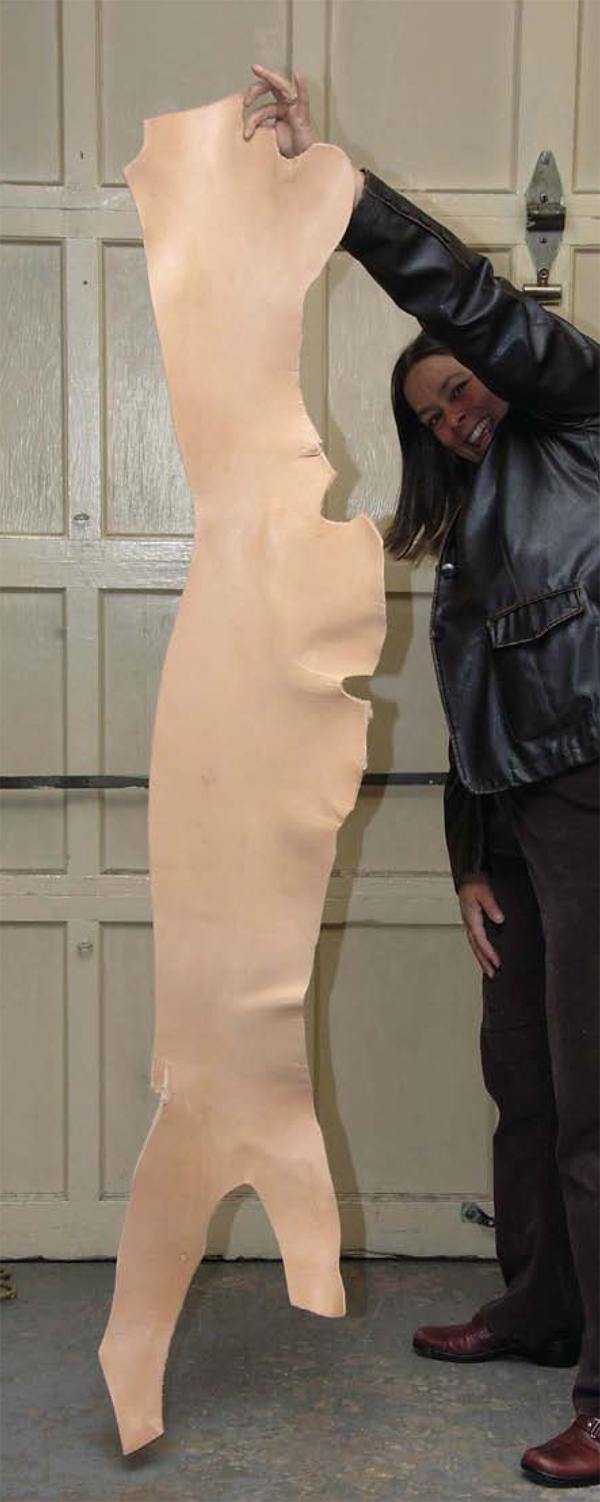
Copyright 2011 by Stackpole Books
Published by
STACKPOLE BOOKS
5067 Ritter Road
Mechanicsburg, PA 17055
www.stackpolebooks.com
All rights reserved, including the right to reproduce this book or portions thereof in any form or by any means, electronic or mechanical, including photocopying, recording, or by any information storage or retrieval system, without permission in writing from the publisher. All inquiries should be addressed to Stackpole Books, 5067 Ritter Road, Mechanicsburg, PA 17055.
Printed in China
10 9 8 7 6 5 4 3 2 1
First edition
Cover design by Tracy Patterson
Top left cover photo: designs by Tandy Leather Factory.
Clutch purse, page 184: made by Bill Schiefer, designer unknown. All other designs by Bill Hollis.
Library of Congress Cataloging-in-Publication Data
Basic leathercrafting : all the skills and tools you need to get started / Elizabeth Letcavage, editor ; Bill Hollis, leathercrafter and expert consultant ; photographs by Alan Wycheck. 1st ed.
p. cm.
Includes bibliographical references and index.
ISBN 978-0-8117-3617-6 (alk. paper)
1. Leatherwork. I. Letcavage, Elizabeth.
TT290.H58 2011
745.53'1dc22
010026231
eBook ISBN 978-0-8117-4424-9
Contents
Acknowledgements
T hanks to our leather experts wife, Mary Hollis, who contributed her time and talents to help organize and facilitate project production and the photo sessions.
Appreciation is also extended to Tandy Leather Factoryand the hospitable staff at its Harrisburg, Pennsylvania, storefor providing some of the tools and supplies included here.
Introduction
L eathercrafting is a rewarding activity that combines working with your hands, engaging your mind, and using your creativity. This book will show you how to take a smooth, flat, unadorned piece of cowhide and transform it into a decorated three-dimensional piece of practical art.
Begin by familiarizing yourself with the tools of the trade. The first chapter provides a starting point for assembling what you need to complete your rst project. Youll nd that many tools are specic to leathercrafting and available in varying degrees of quality and price. When it comes to tools, buy the best you can afford. The best tools will truly produce the best results. The techniques chapter will guide you through every procedure that goes into constructing leather goodsfrom selecting leather to applying a nal nish. Youll learn the fundamentals of tooling: selecting and preparing the leather, transferring a design, carving the leather with a swivel knife, embellishing the design by making impressions in the leather with stamps, coloring the leather, and using nishing techniques to impart a professional look.
These techniques are put to use in the nal chapter, which covers making a belt and card case. The same skills and techniques used to make these items may be used to complete a variety of other projects, such as guitar straps, dog collars and leashes, gun belts, tool belts, and equestrian tack. Make the card case, and then you can move on to wallets, checkbook covers, media player and CD cases, notebook covers, and much more.
As you work with leather, youll quickly discover that practice leads to perfection and experimentation results in excellence. If you carve and stamp regularly, your leatherworking technique will improve, and so will the nal product. Develop your own style, try new ways of working your projects, and invent tooling designs that are different from what you see in the marketplace.
Your handmade leather goods will be greatly appreciated gifts. And, because they will last for decades if well cared for, they often become treasured family heirlooms. Each piece of smooth, flat, unadorned leather is a blank canvas ready for you to create a one-ofa-kind masterpiece. Enjoy the experience!
Getting Started
A n article in a 1945 issue of Popular Mechanics encouraged readers to try leathercrafting. "Few tools are needed," said the writer, "and most of these can be made from nails, bolts, nutpicks, and other common objects."Years later, when the craft became more popular, the Tandy Leather Factory began selling the "Lucky Seven,"a collection of essential carving and stamping tools that is still available.
There's no need to fashion your own tools today machine-manufactured tools are affordable and widely available. While many leathercrafting tools are specic to the craft, there are suitable substitutions for some, and these are noted throughout this book. Where possible, we've offered alternative methods of completing a step so that the purchase of a tool that might only be used occasionally isn't necessary.
Some suppliers offer several types of leathercraft starter sets. These "workshops in a box"include basic tools and supplies along with project kits to make such items as a wallet, checkbook cover, key chain, and the like. Generally speaking, they are a good value, especially if they are on sale. Tool quality can be on the low end, however, and you will want to pass over sets aimed at children.
If you decide to take up leathercrafting as a lifelong hobby, you will likely want to add to your collection and trade up for the more expensive tools. If you're lucky enough to have a leathercraft specialty store nearby, take advantage of specials and clearance-priced merchandise. Consider, too, joining a leathercraft club sponsored by leathercraft specialty stores and online vendors. They offer members generous discounts and regular specials.
If you don't live near a store, everything you need is available online. Refer to the Resources section for a list of suppliers that offer everything you need.
Leather is best stored loosely rolled with the grain side facing inward, and always in a dry place.
Many leather projects can be cut from this double shoulder hide.
The bellylocated on the sides of a double shoulder hideis the least expensive part of a hide and prone to stretching. For that reason, it is not recommended for good quality leather work. It is the best portion to use, though, for kids' projects and sometimes used to make small stamped items.
Leather for Tooling
Tooling is the art of carving and stamping designs on leather goods. The only type of leather suitable for tooling is full grain and vegetable tanned. Full grain refers to a cow hide that has had the hair removed ("top grain"leather, which is unsuitable for tooling, has been sanded to remove imperfections). Vegetable-tanned leather has gone through a tanning process that uses vegetable matter, tree bark, and other natural materials so it doesn't decay.
Tooling is done on the smooth grain side of the leather. The underside is referred to as the flesh side. The price of a hide goes up based on the quality of the grain side: economy hides may have holes, barbed-wire marks, brands, and stains; good quality

